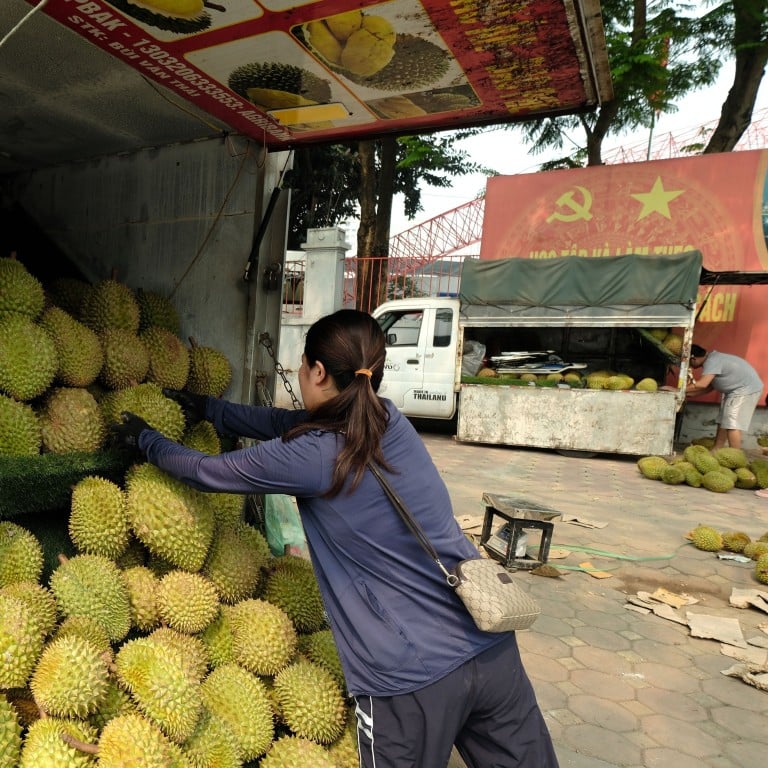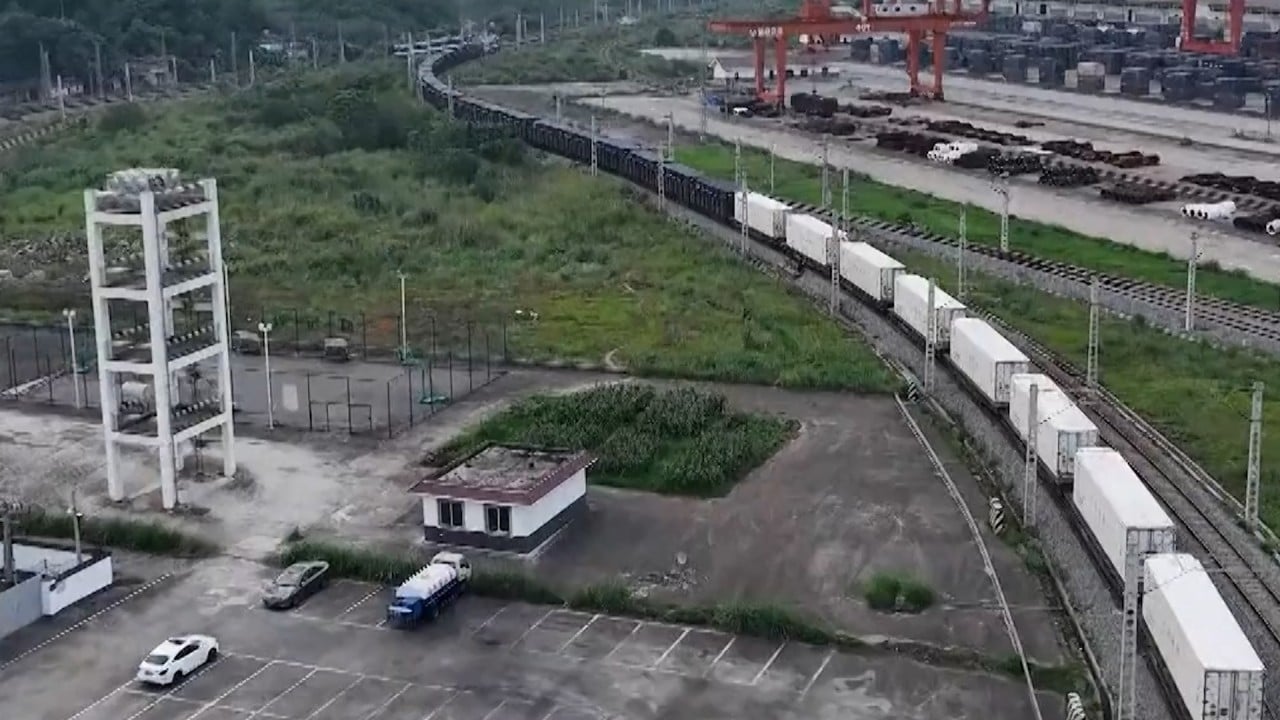
China’s durian output to quadruple in 2024, processing poised to permeate with demand ‘on a rapid rise’
- Chinese-produced durian is set to be available to the public in July, with production from the tropical island of Hainan likely to quadruple to 200 tonnes this year
- Thailand and Vietnam, though, are set to remain the largest sources of the popular pungent fruit, with demand from China ‘on a rapid rise’
China expects to quadruple home-grown durian output this year as demand for the pungent fruit has shown no signs of abating, while its two top suppliers - Thailand and Vietnam - are aiming to consolidate their market dominance and tap further into the burgeoning industrial chain.
Chinese-produced durians are likely to be available to the public in July, with production likely to reach 200 tonnes by the end of the year, Feng Xuejie, director of the Institute of Tropical Fruit Trees at the Hainan Academy of Agricultural Sciences, said on Monday.
Durian has also become a latecomer in China’s US$1 trillion-plus food processing industry.
Some producers have already innovated with a range of processed durian products, such as cakes, bubble tea, coffee and even hotpot, which are more affordable than fresh durian, and have become increasingly popular among younger consumers.
Huang Zheng’en, the president of Hainan Academy of Agricultural Sciences, said the province should expand its industrial chain to increase the value of durian products and nurture local brands.
“Hainan should launch a durian processing industry based on the production scale, to lengthen the industry chain of this product, and increase their added value,” Huang said, the Hainan Daily reported in January.
The country needs to expand more durian processing industries, create a complete industrial chain with Southeast Asia
The province is also looking to complete China’s first durian processing plant in August, the state-backed China Daily newspaper said in March.
China, which is the world’s largest durian consumer, imported 1.4 million tonnes (3 billion pounds) in 2023, up by nearly 70 per cent from the previous year.
“China has very limited arable land to grow durian,” added Feng.
“In the future, the country needs to expand more durian processing industries, create a complete industrial chain with Southeast Asia, and jointly cultivate the market.”
Smells like victory: countries vie to be China’s durian king as crop flourishes
Thailand shipped 95 per cent of China’s durian imports in 2022, Chinese customs data showed, but amid increasing competition from Vietnam, the figure had fallen to 65 per cent last year.
The Southeast Asian nation is set to introduce new standards for durian exports “to enhance quality and global market competitiveness”, its Government Public Relations Department said last week.
The standards would specify dry weight requirements for durian pulp – the sweet edible part of the fruit – of between 28 and 32 per cent, the department added.
Thai Prime Minister Srettha Thavisin has directed the Ministry of Agriculture and Cooperatives to draft regulations “targeting” the sale of unripe “substandard” durians, the statement added following a cabinet meeting earlier this month.
Higher quality durian imports will likely find a receptive audience
Demand from China is “on a rapid rise”, the statement added.
The Thai government anticipates durian demand from China could “potentially increase by fifteenfold in the future”, while it has set a goal for export revenues to reach 1 trillion baht (US$27 billion) in 2024.
“We are seeing an outperformance of what we call the ‘eat, drink, and play’ theme in terms of consumption patterns [in China], where households are spending more on [food and beverage] and entertainment this year,” said Lynn Song, chief economist for Greater China at ING.
“Higher quality durian imports will likely find a receptive audience, with various dessert and drink products using higher quality durians in recent years.”
But climate change can impact the output of premium types of fruit in Thailand, the government statement said.
Vietnam received permission from China in 2022 to begin shipping fresh durians, allowing shipments to soar to 493 million kilograms last year.
The strong demand has pushed some farmers away from lower-value staples that generate less income, while local governments back durian production due to the increased tax revenues, said Nguyen Thanh Trung, a political scientist at Fulbright University Vietnam.
Durian exports ultimately boost Thai-Chinese trade ties and economic partnerships
“The government [of Vietnam] wants the Vietnamese farmers to export more durians and the farmers themselves see that China is the big market,” Nguyen said.
The Thai government’s focus on quality makes sense because its durians are already relatively competitive on quality and price, said Thitinan Pongsudhirak, executive director with the Institute of Security and International Studies at Chulalongkorn University in Bangkok.
“Durian sales are fast becoming Thailand’s major source of export earnings,” he said.
“As China is the biggest buyer with a huge market, durian exports ultimately boost Thai-Chinese trade ties and economic partnerships.”



